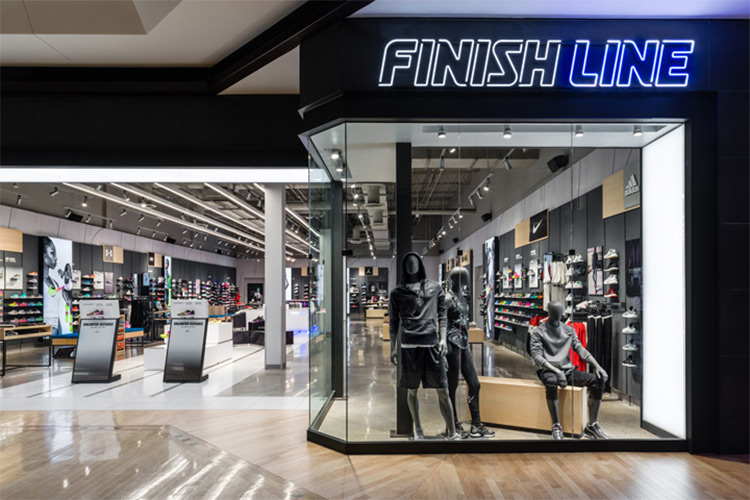Where there is light, there are customers.
I spent the weekend in a town called Schaumburg, Illinois, which is about 20 miles outside of Chicago. My son, Sam, who is 17, was playing in a soccer tournament in the area. Thanks to a quirky schedule (we had more than 24 hours between games) and some amazingly cold weather (you would have thought it was January), we decided doing anything outdoors between games was completely out of the equation.
After our second meal at Portillo’s in two days, it was time to do something other than drink Chocolate Cake Shakes. So we headed to Woodfield Mall, a massive shopping complex that is one of the largest in the country. I thought for sure we could kill a few hours between games doing something other than eating more Portillo’s.
Sam hated it. Almost every second.
It was extremely crowded.
People walk too slow.
“Stuff” is not organized on the shelves or displays the way he wants it.
“This is why I buy everything online” was the quote of the day (and probably worth a few columns on the future of B2B e-commerce over at www.tedmag.com)
And then, he dropped the bomb that really got me thinking.
“It’s way too dark in here.”
Boom.
When I looked around, it was a little dark. It didn’t matter that every major retail chain had a store here. It didn’t matter that every major retail chain had its best stuff here. It didn’t matter that you can buy anything from a tube of ChapStick to a $400 pair of jeans. It was too dark. And stores that didn’t have the right light were stores Sam avoided.
I started doing some research (keep in mind we had a lot of time between games) and found this quote from Zen Merchandiser, an online blog for retail businesses. “Retail lighting impacts the shopping experience of any customer, can affect employee productivity and will make or break your brand, through the way it emphasizes merchandise and plays a big role in physical store operational costs.” The blog gives a scenario where a retailer uses cheaper lighting that might not make products look as good as they should. A few lighting manufacturers showed me some real-life examples at last year’s LIGHTFAIR in Philadelphia. The blog explains it better than I could. “When a customer wants to try on a pair of earrings, a necklace, a scarf, a hat, or any other type of apparel, they could look pale and have an unhealthy glow due to your lighting choice,” the blog said. “In this scenario, you end up losing a sale and there is a high chance that you will lose the loyalty of existing customers, the chance of creating a good impression and bond with new customers, as well as the chance of some good old-fashioned word-of-mouth marketing.”
There was one store Sam did like. The Finish Line store was like none other we have ever seen before. Loud music. Fancy furniture. Bright lights. The store practically begs you to walk inside. And once you are in, it’s a 40-minute experience to see everything.

Like the Zen Merchandiser blog, the lighting is so perfect you can really see the shoes and shirts differently. It was bright, but not too bright. But the lighting did make you want to stick around, even if you were not impressed with the other thousands of square feet in the mall.
The interior lighting also reminded me of exterior lighting at shopping malls across the country. We live in suburban St. Louis, a fairly typical neighborhood that is probably not unlike most suburbs across the country. This past holiday season, we experienced at least 4 carjackings at shopping malls. It gets to the point where people are saying they don’t want to go to malls anymore, and they definitely are not going at night.
As mall owners, and as store owners inside the mall, outdoor and parking lot lighting is now essential to success. If people won’t come, stores inside won’t survive. How do you correct that? Find the brightest lights possible and create daytime at night in parking lots? Add more lighting by taking away parking spaces for customers?
As distributors, you are selling this lighting to someone who will install it for their customers. But it’s not the contractor’s customer that really matters. It’s the thousands of people who are wandering through shopping malls wondering why the experience isn’t that great. And we wonder why retail as we used to know it is dying at such a fast rate. I’m not saying better lighting is going to save Sears, but better lighting is going to keep the next generation from heading straight to the Internet to make their purchases. Once they start getting too comfortable with that, you can bet they will be doing it in their B2B lives, too.
So, how’s your lighting? Are you prepared to know and create the lighting that the customer of your contractor’s customer wants? Because that’s going to be the difference between success and failure with the next generation of shoppers.
Tagged with lightED